
-
Find the right food for your petTake this quiz to see which food may be the best for your furry friend.Find the right food for your petTake this quiz to see which food may be the best for your furry friend.Featured products
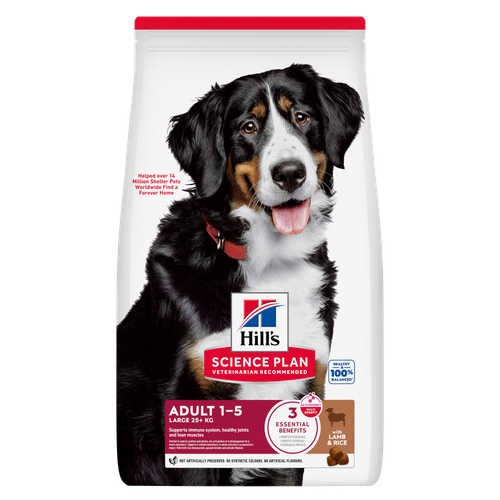 Large Breed Adult Dog Food
Large Breed Adult Dog FoodHill's Science Plan Large Breed Adult Dog Food with Lamb & Rice is a complete pet food, specially formulated with ActivBiome+ Multi-Benefit Technology.
This food is specifically designed to fuel the energy needs of large breed dogs during the prime of their life.Shop Now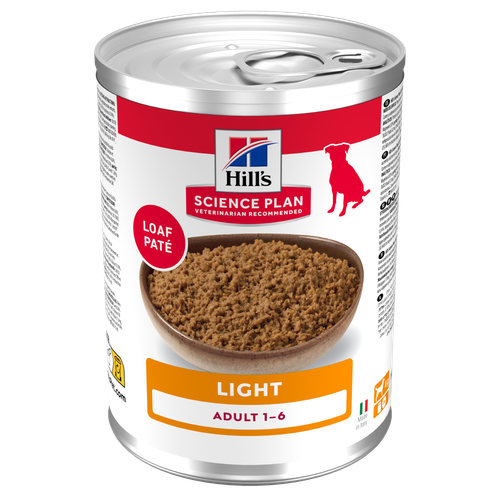 Adult Light Dog Food
Adult Light Dog FoodHill's Science Plan Light Adult Wet Dog Food is a complete premium pet food for adult dogs that tend to gain weight easily. This deliciously smooth loaf is formulated to deliver the appropriate amount of energy to support weight maintenance in adult dogs.
Shop Now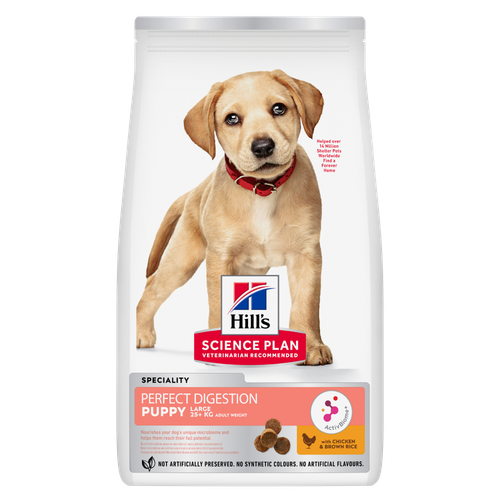 Perfect Digestion Large Breed Puppy Food
Perfect Digestion Large Breed Puppy FoodPrecisely balanced nutrition with Hill's ActivBiome+ prebiotic blend actively contributes to supporting digestive health and overall wellbeing to help your pet feel their best
Shop NowFeatured products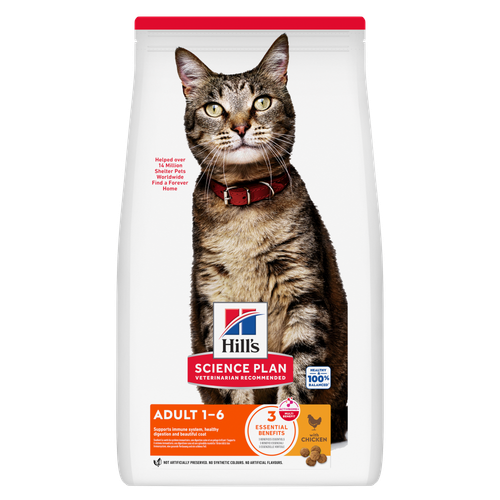 Adult Cat Food
Adult Cat FoodHill's Science Plan Adult Cat Food with Chicken is a complete pet food, specially formulated with ActivBiome+ Multi-Benefit Technology.
This food is specially formulated to fuel the energy needs of cats during the prime of their life.Shop Now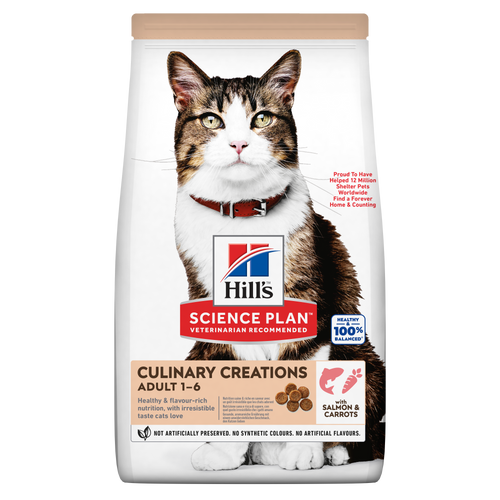 CULINARY CREATIONS ADULT CAT FOOD
CULINARY CREATIONS ADULT CAT FOODHill's Science Plan CULINARY CREATIONS Adult cat food with Salmon & Carrots was formulated to provide a great-tasting experience to cats. Its delicious flavour and texture are combine with essential nutrients to support cats' optimal health during the prime time of their life. Specially formulated with high-quality salmon protein, essential taurine for heart health & balanced minerals to support kidneys & bladder.
Shop Now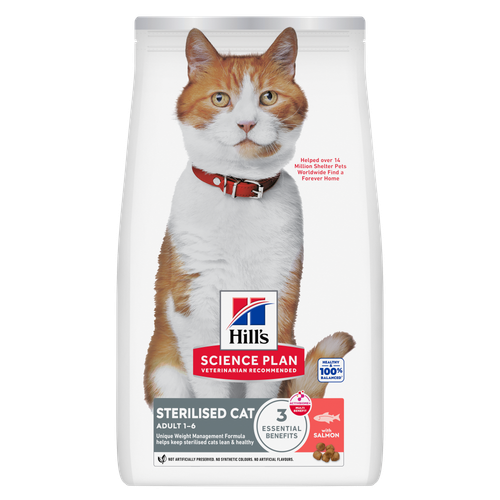 Sterilised Adult Cat Food
Sterilised Adult Cat FoodHill's Science Plan Adult Sterilised Cat Dry Food with Salmon is specially formulated with ActivBiome+ Multi-Benefit Technology. It is a precisely balanced nutrition, tailored to meet the needs of sterilised cats, to help keep sthem lean & healthy.
Shop Now -
Dog
- Dog Tips & Articles
-
Health Category
- Weight
- Food & Environmental Sensitivities
- Urinary
- Digestive
- Joint
- Kidney
-
Life Stage
- Puppy Nutrition
- Adult Nutrition
- Senior Nutrition
Cat- Cat Tips & Articles
-
Health Category
- Weight
- Skin & Food Sensitivities
- Urinary
- Digestive
- Kidney
-
Life Stage
- Kitten Nutrition
- Adult Nutrition
Featured articles The Incredible Science Behind Your Pet's Microbiome
The Incredible Science Behind Your Pet's MicrobiomeLearn what your pet's microbiome is, how it contributes to your pet's gut and overall health, and why nutrition is important in maintaining healthy microbiomes.
Read More Microchipping: The Facts | Hill's Pet
Microchipping: The Facts | Hill's PetThe government has announced that as of April 2016, all dogs in the UK must be microchipped by law.
Read More Pet Nutrition: What Makes "Healthy" Pet Food Healthy? | Hill's Pet
Pet Nutrition: What Makes "Healthy" Pet Food Healthy? | Hill's PetIn people, the right diet is very important. If you are eating the wrong way for your metabolism, activity level, age and lifestyle you could end up with health issues.
Read More -


Has your dog been scratching themselves? Does their skin look red? Do they have pimples or an odour to their skin? They could have a condition known as pyoderma, a common skin condition that affects dogs of all shapes, sizes and ages. If you're concerned that pyoderma could be wreaking havoc on your dog's skin, read on to learn more about common causes and treatments.
What Is Pyoderma in Dogs?
Pyoderma is a bacterial infection, which can be superficial or deep, that affects hair follicles and the surrounding skin. If you break it down, "pyo" means pus, and "derma" means skin. Pyoderma in dogs usually has an underlying cause, such as:
- A foreign body, like grass seed, getting under the skin
- A trauma or bite wound
- An allergy or hypersensitivity to fleas, food or environmental factors
- Mites
- A hormonal disorder, like Cushing's syndrome or hypothyroidism
- An autoimmune disorder
- Administration of immune-suppressing drugs, like steroids or chemotherapy
- Poor nutrition
What Are the Signs of Pyoderma in Dogs?
Pyoderma can present in a variety of ways. It can be limited to one area, or it may cover your dog's skin. Some areas of the body, such as skin folds, chins, lips, vulvar folds and the skin in between the toes are more likely to be affected. Sometimes pyoderma is extremely itchy, such as in cases of flea allergy dermatitis; other times, it doesn't seem to make a dog itchy at all. Signs of pyoderma to look out for include:
- Red bumps
- Pustules
- Flaking skin
- Hair loss
- Skin discolouration
- Excessive shedding
- Redness
Puppies can get a special kind of pyoderma called puppy pyoderma. Your dog may have puppy pyoderma if you see red bumps on the armpits, groin and/or abdomen. These red bumps can scab over and scale. Puppy pyoderma can make your dog slightly itchy, but pups with puppy pyoderma are usually otherwise in good health.


Tasty Tips
What Is the Treatment of Pyoderma in Dogs?
Pyoderma is usually caused by Staphylococcus bacteria (or Staph). Unless your dog has a drug-resistant species, Staph infections are usually easily cleared up. Treatment of pyoderma is usually aimed at resolving the bacterial infection and addressing the underlying cause, if applicable. Pyoderma in dogs is directly treated with antimicrobial therapy — either oral antibiotics or topical antibacterial medication, shampoo or spray applied to the affected area. The use of antibiotics should be kept to a minimum, so please follow your vet's instructions for these antibiotics closely.
If your vet suspects pyoderma, then they will take a sample from the skin. They will put it under the microscope to look for bacteria and other organisms, such as mites, and may also send a sample to a specialised laboratory to determine the most effective antibiotic(s) to prescribe if necessary. They may also order a fungal culture or a black light test to rule out ringworm.
The greater challenge with pyoderma in dogs is determining the underlying cause of the infection, which you and your vet will need to work together to figure out. There may be some trial and error involved; your vet may ask to take some blood, skin or urine samples from your dog.
Does Nutrition Play a Role?

Nutrition and your dog's food plays a large role in skin health. For example, protein and amino acids are important for hair growth and fatty acids are key for coat quality and reducing water loss through the skin.
Dogs with ingredient sensitivities or food allergies may be at risk for developing pyoderma after eating something that causes a reaction. If your vet suspects a food intolerance, they will need to treat the skin infection and then they may recommend feeding your dog a dietetic food to see if the skin problem abates.
If your dog doesn't have food allergies but has pyoderma secondary to other health concerns, like a hormonal disorder, then it might be a good idea to feed your dog a food that's specially formulated for dogs with sensitive skin. It's important to talk to your veterinarian about the ideal food to make sure your dog receives the best nutrition possible.
Pyoderma is a pain, but with the right knowledge and care, it can be resolved. If your dog develops pyoderma, especially more than once, understand that you're dealing with an underlying issue that needs resolution. If you notice any of the signs of the infection, call your vet so that you can work together to get your pup back to feeling like their best self.


Dr. Sarah Wooten graduated from UC Davis School of Veterinary Medicine in 2002. A member of the American Society of Veterinary Journalists, Dr. Wooten divides her professional time between small animal practice in Greeley, Colorado, public speaking on associate issues, leadership, and client communication, and writing. She enjoys camping with her family, skiing, SCUBA, and participating in triathlons.
Related products

Precisely balanced nutrition with Hill's ActivBiome+ prebiotic blend actively contributes to supporting digestive health and overall wellbeing to help your pet feel their best

Hill's Science Plan Light Adult Wet Dog Food is a complete premium pet food for adult dogs that tend to gain weight easily. This deliciously smooth loaf is formulated to deliver the appropriate amount of energy to support weight maintenance in adult dogs.

Hill's Science Plan Adult Wet Dog Food with Turkey is a complete premium pet food for adult dogs from 1 year. This deliciously smooth minced turkey loaf is formulated to deliver the appropriate amount of energy to support the needs of adult dogs.

Hill's Science Plan Large Breed Adult Dog Food with Lamb & Rice is a complete pet food, specially formulated with ActivBiome+ Multi-Benefit Technology.
This food is specifically designed to fuel the energy needs of large breed dogs during the prime of their life.
Related articles
Discover the causes, signs, and treatments of kidney disease in dogs and find methods of supporting your dog's kidney health. Learn more at Hill's Pet.

Dog obesity is a significant problem - learn more about helping your dog become trimmer and healthier through improved nutrition.

Gurgling tummies in turmoil are not good news for pets. Owners who have to clean up the unfortunate consequences, digestive problems are one of the rare downsides to owning a pet.

Learn to see the signs of an upset stomach in your dog, understand the triggers and explore some possible solutions.

Put your dog on a diet without them knowing
Our low calorie formula helps you control your dog's weight. It's packed with high-quality protein for building lean muscles, and made with purposeful ingredients for a flavourful, nutritious meal. Clinically proven antioxidants, Vitamin C+E, help promote a healthy immune system.
Put your dog on a diet without them knowing
Our low calorie formula helps you control your dog's weight. It's packed with high-quality protein for building lean muscles, and made with purposeful ingredients for a flavourful, nutritious meal. Clinically proven antioxidants, Vitamin C+E, help promote a healthy immune system.


